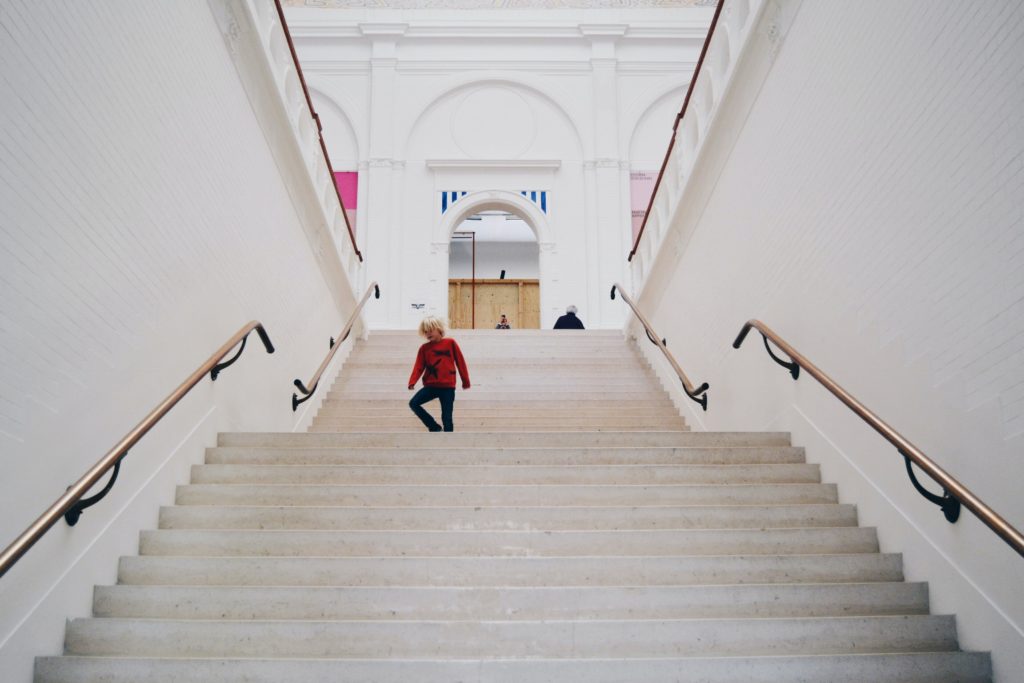How museum learning can help schools with their recovery curriculums
By Kate Fellows
Hello from my dining room in north Leeds! I have to say, I have a greener view than from my office at the Leeds Discovery Centre, but it’s not as lovely as the views of some of our other venues, like Lotherton and Temple Newsam. I don’t know about you, but I’m missing chats with colleagues over the kettle, familiar buildings, routines and working with lots of different groups of young people and adults. Now my days are filled with juggling family life, on screen meetings and conversations about reopening our museums and galleries safely to the public whilst still enabling genuine, authentic, accessible experiences. I have never had so many chats about toilets in all my life!
Lockdown has affected all our lives, personal and professional. As thoughts move to recovery, I’d like to share with you some of the ways in which we have started thinking about how we can help schools recover too.
The ‘Recovery Curriculum’
Lots of schools are currently developing, and starting to enact, their ‘recovery curriculums’. These are about acknowledging what has happened in the community, fostering mental health and wellbeing in pupils, resettling them into the mind set of learning. We know arts and cultural engagements help foster relationships, rekindle the curiosity for learning, and provide alternative engagement methods for pupils who have found their own way over the last few months.
After talking to local Heads and teachers, we have found that most have embargoed visits until at least early 2021, but that schools that have strong pre-existing relationships with us still want support. We have already started shifting our digital home schooling, family orientated lockdown offer on our website, to more of schools and teacher-led focussed offer that looks at how we can use museum collection images and activities within classroom bubbles groups. From September, we will be running virtual workshops into classrooms, supported by resources on www.mylearning.org and our schools membership scheme which includes loans boxes of accessioned museum objects.
Throughout, we are advocating the use of arts and culture as a tool for blended learning support between home and school. We have suggested using images, films, and objects to start enquiry based learning, and reignite the sparks of curiosity in children who have been out of education for a while. Wed have encouraged child-led learning because that will give teachers an indication of the ways of learning they have used at home.
Closing the widened attainment gap
Not all pupils will have engaged in learning whilst at home. Statistically, we know that low income families are less likely to have engaged in learning during the pandemic. This might be because of motivation, or lack of digital access, or less grown up support at home. Before this crisis, we know that around 15% of children under 16 in Leeds live in working poverty, and they are more likely to have limited life chances, low educational outcomes, restricted access to opportunities, and lower wellbeing. All these will have been exacerbated over the last few months. We also know that object based learning can be a catalyst for social change, developing the creative thinking skills needed for entrepreneurship, innovation and community building. All of these are really needed now, and are a clear stepping stone in recovery curriculums.
In terms of catching up academically, museum objects and the stories they tell, can usually teach a learning point more clearly, concisely and memorably than a paper based exercise. With a cohort of trainee teachers recently, we talked about using snail shells to teach climate change, taxidermy for evolution or adaptation, numismatics (coins and medals) for maths, chronological understanding for history, leadership in sport and using the environment as a giant object. We discussed the fact that it doesn’t have to be a museum object (I mean, that’s nice if it is, but it doesn’t have to be) and that the trainees can use anything from home or at school to helps their teaching point. Some of these may form part of a longer lasting digital offer into secondary schools.
Bereavement, loss, commemoration
Society is grieving for a loss of people, freedom and ways of life that were the norms until a few weeks ago. Museums and object based learning build communities and are a good starting point for discussions about commemoration, loss and bereavement. As a service, we are contemporary collecting stories of lockdown with communities. We are living through history.
You can’t replace the real!
I have talked about images and films above, but, to be honest, we’re probably all sick of screens! You can’t replace the real. We can still run our primary school loans box service safely, and, once schools are comfortable and confident, we will help them with risk assessments that will help them to come back, visit and use the collections. And, after all the discussions, I can absolutely assure them the toilets will be immaculate!
Every locality and every organisation will be different. After talking to teachers, we think this approach will work for us in Leeds, and if not, we’ll try something else! I hope you have equally as positive conversations with your local teachers. Good luck!

